This post covers 3D visualization and interior design trends for your design firm to consider. Changes in people’s lifestyles following a few years of the pandemic will affect their preferences for interior design. After staying at home for an extended period during the pandemic’s peak, there are bound to be some noticeable facelifts.
Interior Design Trends
Some of the most anticipated arrivals in interior design styles are as follows:
The return of chocolate brown
As far as interior design services are concerned, white, the dominant interior color, is no longer preferable. A sleek and colorful space is expected to replace the popular all-white background. People have always tried to make their personal spaces cozier and more welcoming, and the predominantly white aesthetic starts to feel impersonal and cold in interior design. It is on the way to retirement (at least for the time being) just until the new addition of colors eventually seems overly busy.
RELATED: Differences between interior design and interior architecture companies
Monochromatic spaces are less desirable than they used to be a decade ago, and they don’t look very welcoming and are almost pale compared to vibrant colors. Even now, when pandemic living is slowly easing up, many people still do not want to get too comfortable outside, and they spend more time in their homes and want a dynamic space to cheer things up.
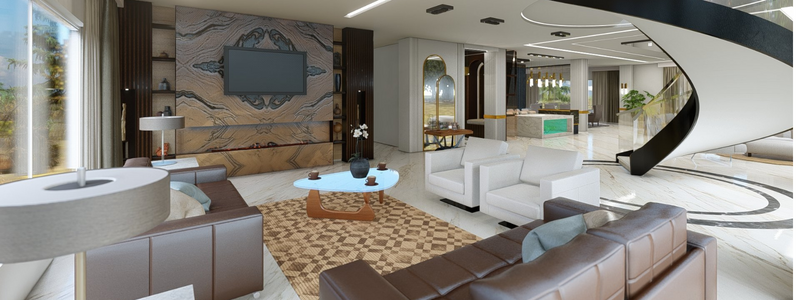
As the white interior departs, chocolate brown comes back with a bang. In the past, brown was mostly paired with hues of orange and yellow in the living room, chocolate brown is now ready to play with many other colors to create interior elegance and timelessness. When people begin experimenting with a mixture of colors, neutrals have to take the back seat for a while. The palette might even resemble the world outside, where the 3D interior rendering design expert uses elements that imitate nature as close as possible.
RELATED: 3D Interior design costs, modeling pricing, and rendering rates for buildings
Objects and surfaces inspired by the nature
If you spend lots of your time indoors, it is easy to discover the lack of connection with nature. An effective way to compensate for the lost time is to bring nature to interior design. You can do a few things, for example, using natural surfaces like stoneware and marble or introducing nature-inspired decorative objects. With all its imperfections, the need to see and feel nature calls for a significant overhaul from a serene interior into a soulful ambiance. Such raw materials as terracotta and travertine introduce visual intrigue and depth to indoor living.
People yearn to stay close to nature, and it wouldn’t be surprising if there were a sudden increase in demand for large trees like Southern magnolias and black olives. The main objective of the 3D architectural visualization services here is to infuse the therapeutic atmosphere of the outdoor environment into the interior design. Objects and textures taken straight from (or inspired by) the Earth are taking back their place from synthetic materials. It doesn’t have to be in simple colors, either.
RELATED: The workflow process for interior 3D rendering at companies & design firms
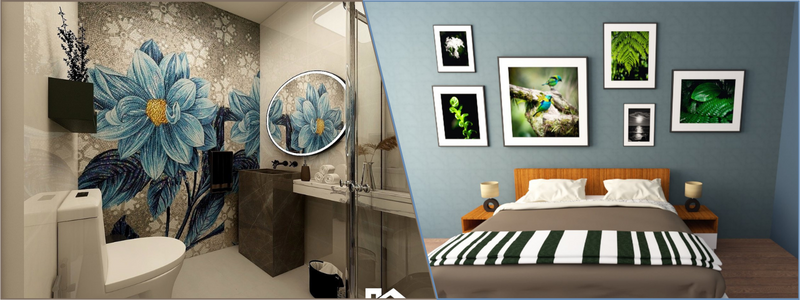
Sparkling crystals and exotic flower motifs would make an excellent inviting contrast when paired with burnt umber or cognac. The color combination doesn’t follow any unwritten rule of the interior design industry; nature can seem randomly brilliant, and that’s what everybody wants to replicate. Earthy elements like wood and stones are undying classics. They have always been essential elements of interior designs, but this time they take center stage and are ready to be once again the dominant hues. Their warmer tones will replace the calm minimalistic approach.
Curved and sculptural furniture
Soft angles and shapes also bring an unmistakable sense of a back-to-nature vibe to interior design. It only makes sense if they, too, will have a massive comeback along with chocolate brown. The 3D furniture modeling artist uses sculptural furniture as an easy way to combine culture and nature in a single package.
RELATED: Top 6 architectural visualization and 3D rendering trends for your company to follow
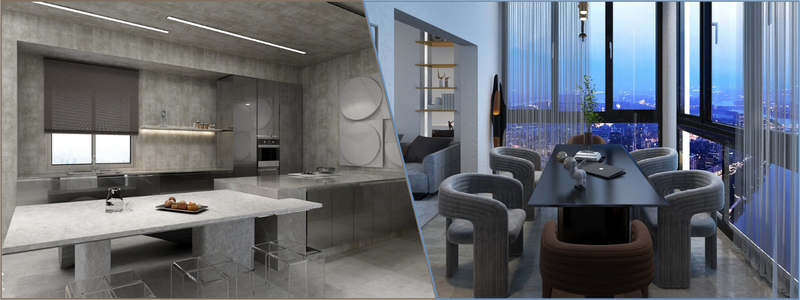
Mixture of materials
While sometimes it feels good and safe to go with the flow, the desire to have unique things never disappears. Also, achieving uniqueness is relatively easy; mixing different materials into furniture design is rare, and combining wood, metals, and stones will ironically be commonplace. Thankfully, there are countless ways to integrate materials, so every object still has its unique appeal.
The trend of mixing materials and designs was popular in the early 90s interior design and has become a hit again because of nature’s allure. As in the old days, people can take either of two directions: an all-natural mixture of creams and dark wood or multi-color schemes paired with stainless steel accents. Objects made from a combination of materials are likely the focal points of living space.
Multipurpose rooms
In the aftermath of pandemic-related lockdown and work-from-home culture, a living space that serves as an office has become the new normal. It is common for clients to ask the 3D architectural rendering professional to design a bedroom equipped with a treadmill or a family room fitted with an almost-too-large desk. They are neither ornaments nor out of place, and the equipment is there with an explicit purpose.
RELATED: 5 Benefits of using 3D rendering and 3D visualization services for interior design
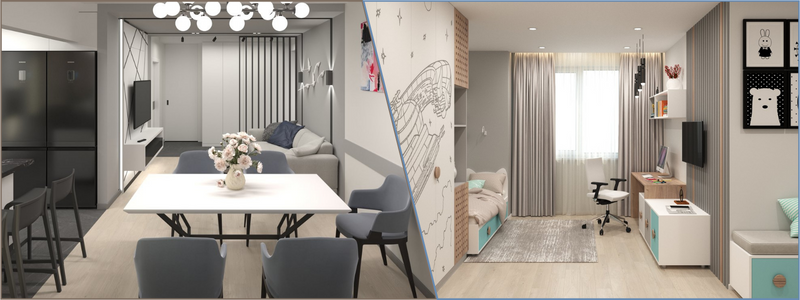
3D Architectural Visualization Trends
As people revamp their preferences for home interior designs, the architectural visualization industry will keep up with the demands for fresh rendering styles and methods. Here are the trends to know.
Artistic rendering
The advent of 3D CAD technology opens the door wide for immaculate hyper-realistic architectural renders. The objective of achieving a render quality comparable to professional photography has been completed. It is good in every way, but more architects couldn’t help but feel nostalgic about the looks of past visualizations. That said, it does not mean they return to the drawing board and get a new pencil sharpener. Recently there have been talks about an old-style movement in the architecture rendering industry. 3D Render artists still rely on modern technologies, but they are starting to get used to the idea of using sophisticated tools to recreate visualization styles from the past.
RELATED: Mistakes to avoid when deciding on an architectural visualization firm
Sketches and watercolors are gaining back their popularity for a good reason, and the artistic rendering looks much more expressive than its photographic counterparts. Like interior design trends, people appreciate everyday objects’ imperfections. Photorealistic rendering might seem too perfect to some people, while watercolors and sketches look natural and understated.
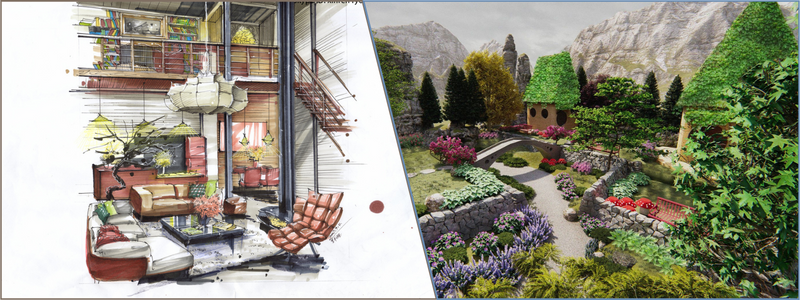
VR and AR
On the augmented reality front, the only trend is increased adoption. The technology has been here for years, yet the implementation in the architectural industry takes a slow walk rather than the high-speed train. The increased adoption rate happens thanks to readily available software and a more fabulous pool of AR talents in the workforce. As for virtual reality, the most welcome improvement concerns the collaboration functionality of the platform. Its most considerable appeal as a visualization tool remains the same.
Architectural firms use 3D VR/AR architectural services to showcase an interior design to potential clients and investors. Unlike typical rendering, VR models allow users to interact with some of the digital objects. Tech companies have developed apps to allow AEC professionals to use VR as a collaboration tool. One of the most prominent apps is called Arkio. The most significant selling point of Arkio is how it enables an entire project team to access the interior design visualization simultaneously and make changes in real time.
RELATED: Top 9 VR applications for architectural design companies
It has been a while since AEC professionals expressed the need for VR functionality with a user-friendly interface. The collaboration tool in Arkio offers a solution to the long-standing problem. Interactive visualization is still the main appeal of VR, and the platform is becoming a valuable tool for architects and engineers to improve productivity and efficiency during the design phase. It is not just a marketing tool to showcase a theoretical interior design to potential clients but a collaborative platform throughout the architectural development project.
Cloud Rendering
Also known as render farm, cloud rendering service allows visualization companies to utilize the power of cloud computing to speed up a render process. 3D architectural rendering is a hardware-demanding task, especially when the source 3D models have plenty of intricate details and complex lighting. Although hardware components are getting more affordable, an in-house rendering process can be too much of a burden. It takes much time to generate high-quality, high-resolution renders, and an animated render is even more time-intensive than a static one.
Render farm gives access (for a fee) to any purpose-built computers to handle the task. More architectural visualization artists and CGI professionals from related industries will take advantage of the service in the coming years. High-speed architectural renderings, static and animated, are coming and will eventually become the industry norm sooner than later.
RELATED: How to use 3D architectural design as visual storytelling
Storytelling with visualization
Whether you use static, animated, or virtual rendering, the storytelling aspect of visualization is here to stay. Visualization is not just a series of images on screen but a coherent narrative to tell the audience about the story behind the project and what it tries to achieve. Storytelling is familiar and will be around for a while. The rendering’s details and level of realism affect the audience significantly, but the subtle story behind the ideas appeals to their emotions. Architectural interior design services with interior design experts are available to help companies create interior designs for their clients.
How Cad Crowd can assist
At Cad Crowd, we have the privilege of working with hundreds of the best interior designers and architects available. Get a free quote today if you want help with your project!
